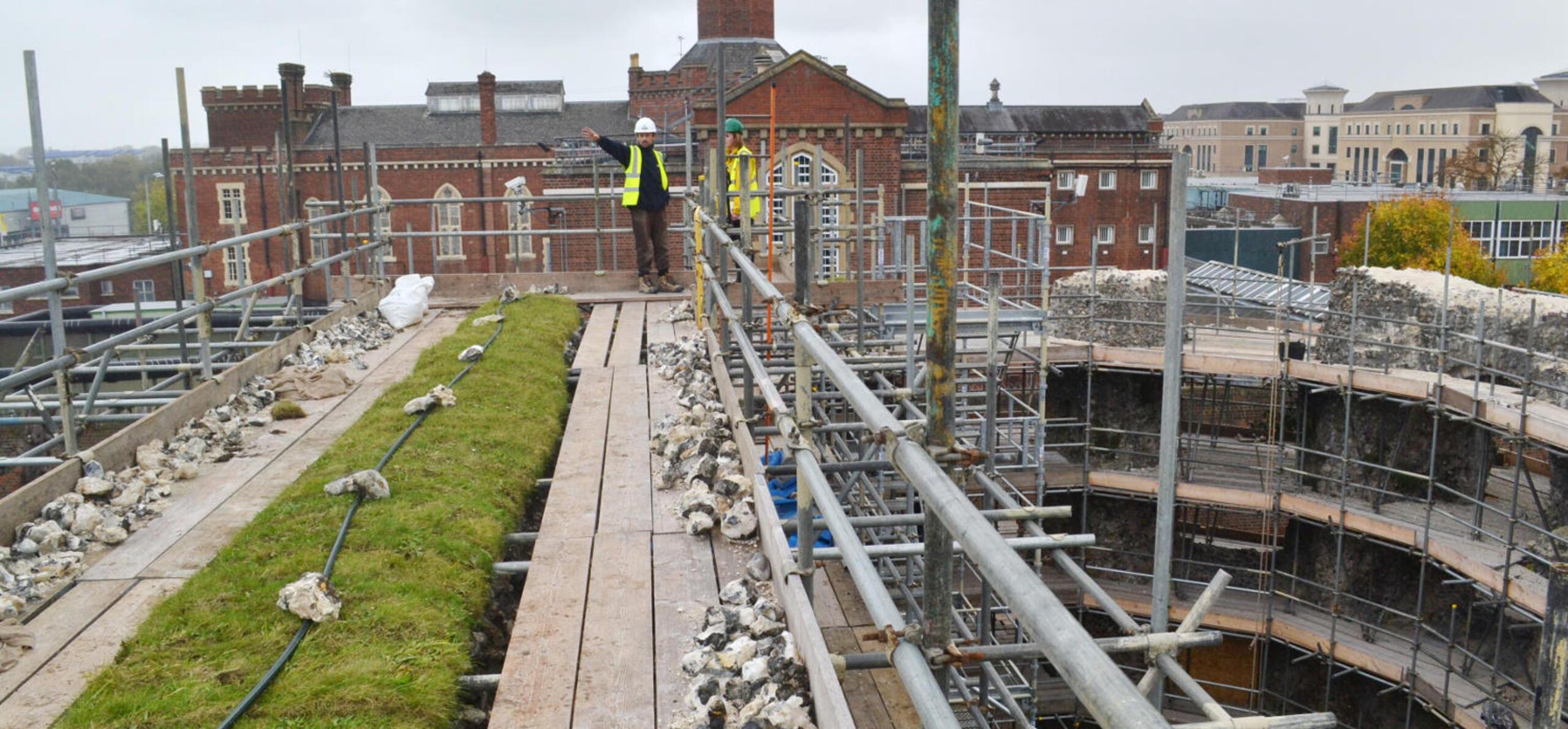Barnaby Wheeler, Senior Architect, Heritage Architecture, Reading Hampshire Property Partnership
The conservation of the roofless walls of ruins such as medieval abbeys and castles has conventionally involved removing all vegetation and repointing the exposed masonry surfaces in strong mortar to keep the water out. Recent research into the effect of encouraging grass growth on accumulated soil on top of such walls has demonstrated that a capping of turf can act to effectively protect ruins and reduce the need for regular maintenance.
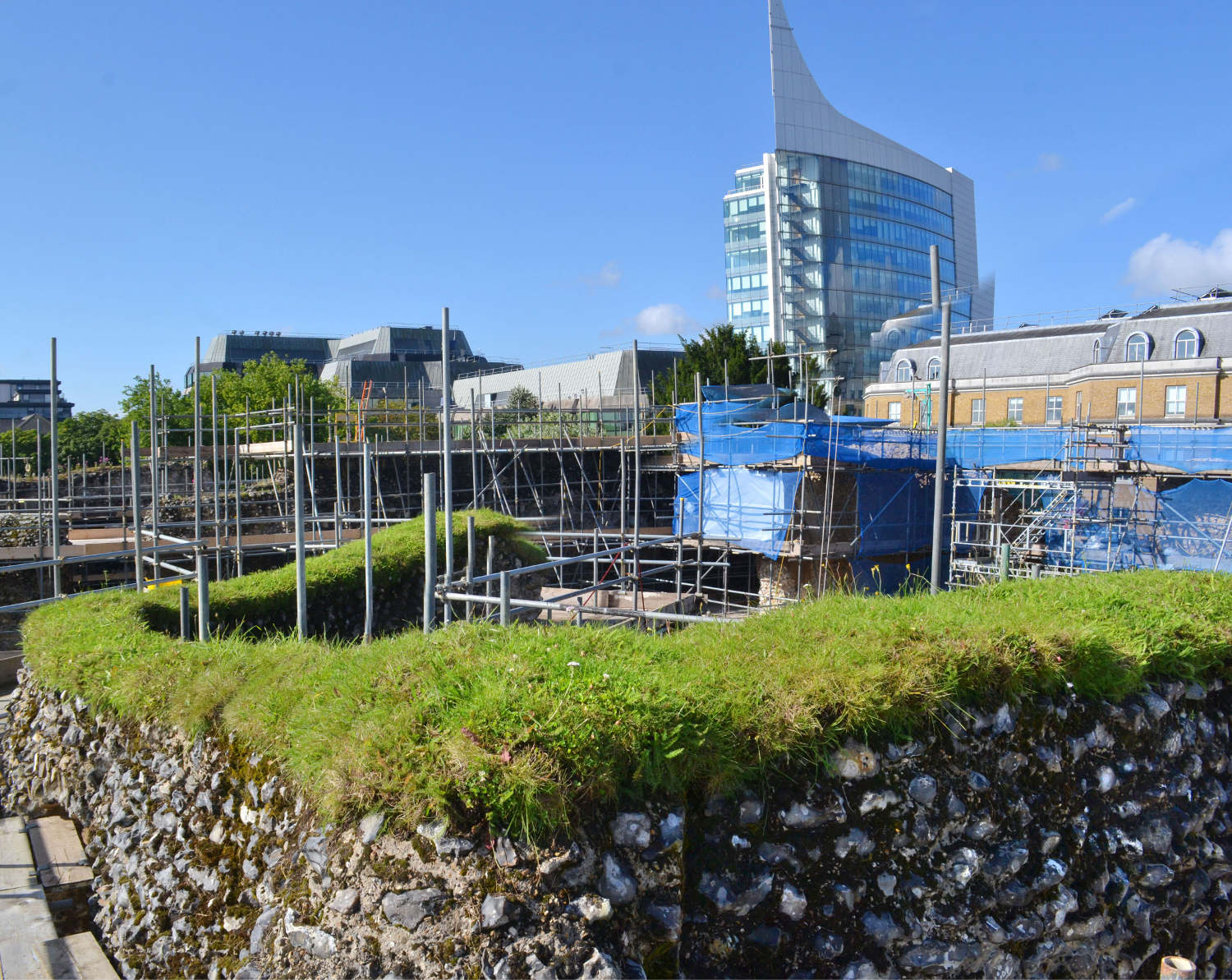
Soft capping in the south transept (photo: Chris Forsey)
The Abbey walls were never supposed to be exposed to the elements. The walls that you now see are the rubble cores that would have been protected with limestone or lime-wash. Without this protection, water entered the cores of the walls or eroded the mortar. This led to an increasing number of flints falling that caused the closure of the ruins in 2009.
A good layer of soil bound together by the roots of grasses and/or sedums will effectively insulate the top of the wall and protect it from the destructive effect of the freeze thaw winter cycle. It will also act to mitigate the run-off of water as it absorbs rain fall and then gradually releases it. Even in heavy rain it will slow the flow of water down the wall faces.
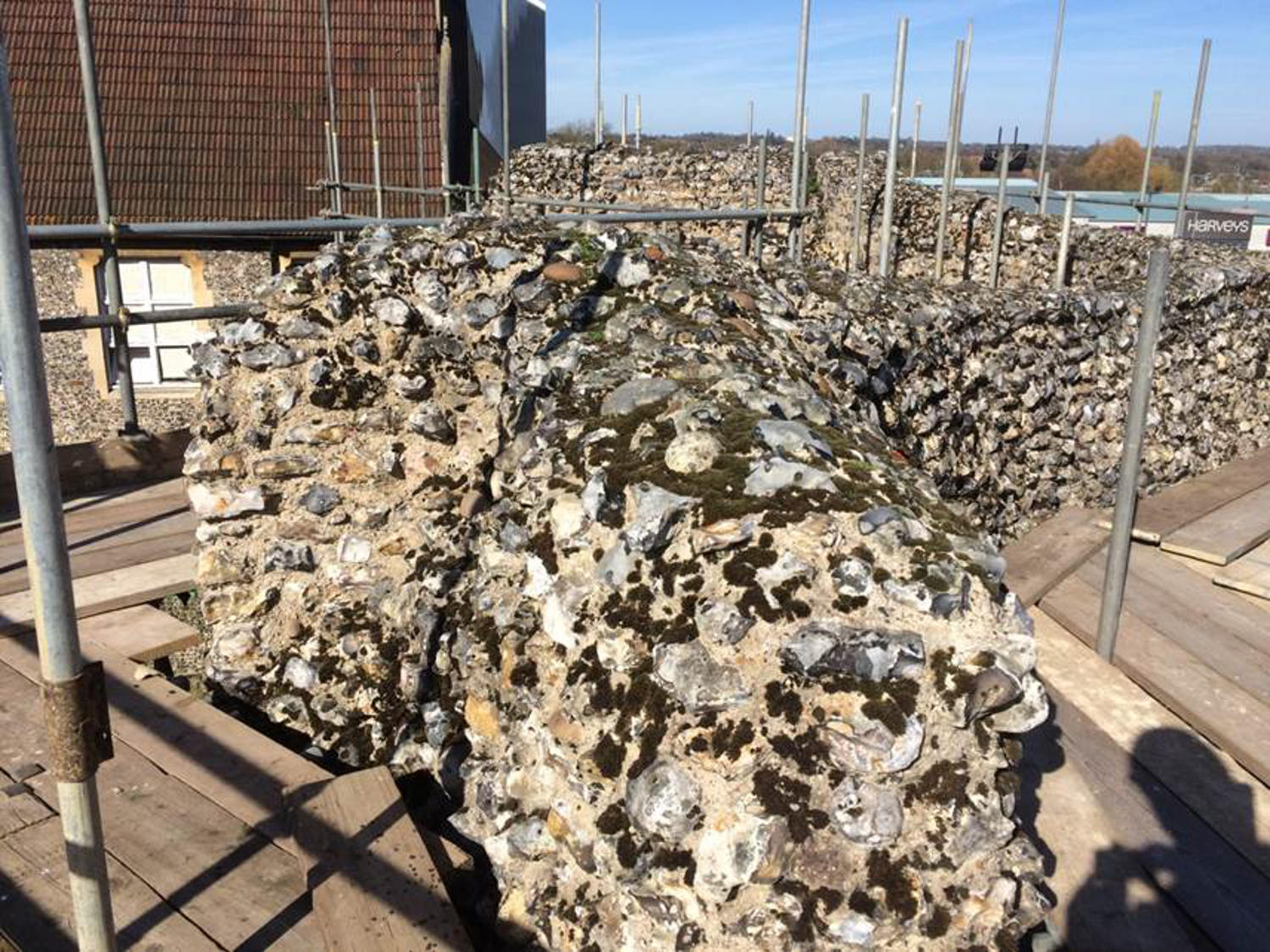
Reading Abbey before conservation
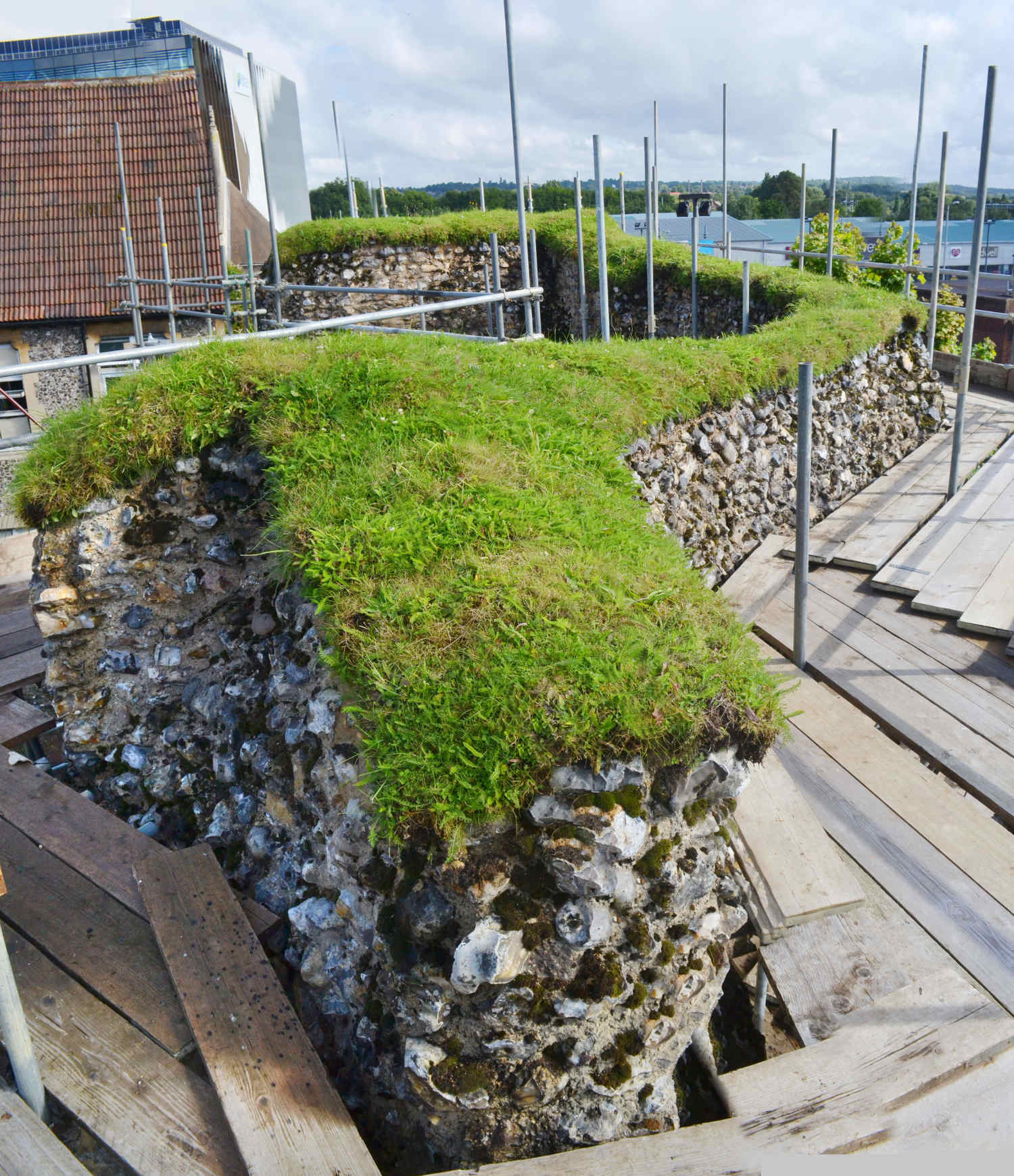
Soft capping on the South Transept (photo: Chris Forsey)
The root systems of grasses and sedums do not present a threat to the wall top since they remain shallow and non-invasive however, it is necessary to stop the establishment of plants which develop woody roots such as buddleia and ash. An annual inspection and removal of such unwelcome invaders is generally enough to keep this under control.
The best kind of turf to use for soft cappings is that cut from the same site as the ruins and this is what has been done at Reading. The grass areas at the south end of the site complete with their naturally occurring mix of “weeds” have been harvested for the soft caps. To add additional resistance during periods of summer drought, sedum “plugs” have been inserted along the edges, the idea being that the sedum will take over areas where the grass dies back and so help to keep the cap intact. Not all the soft caps will thrive and over the next few years it will be interesting to see how they fare.
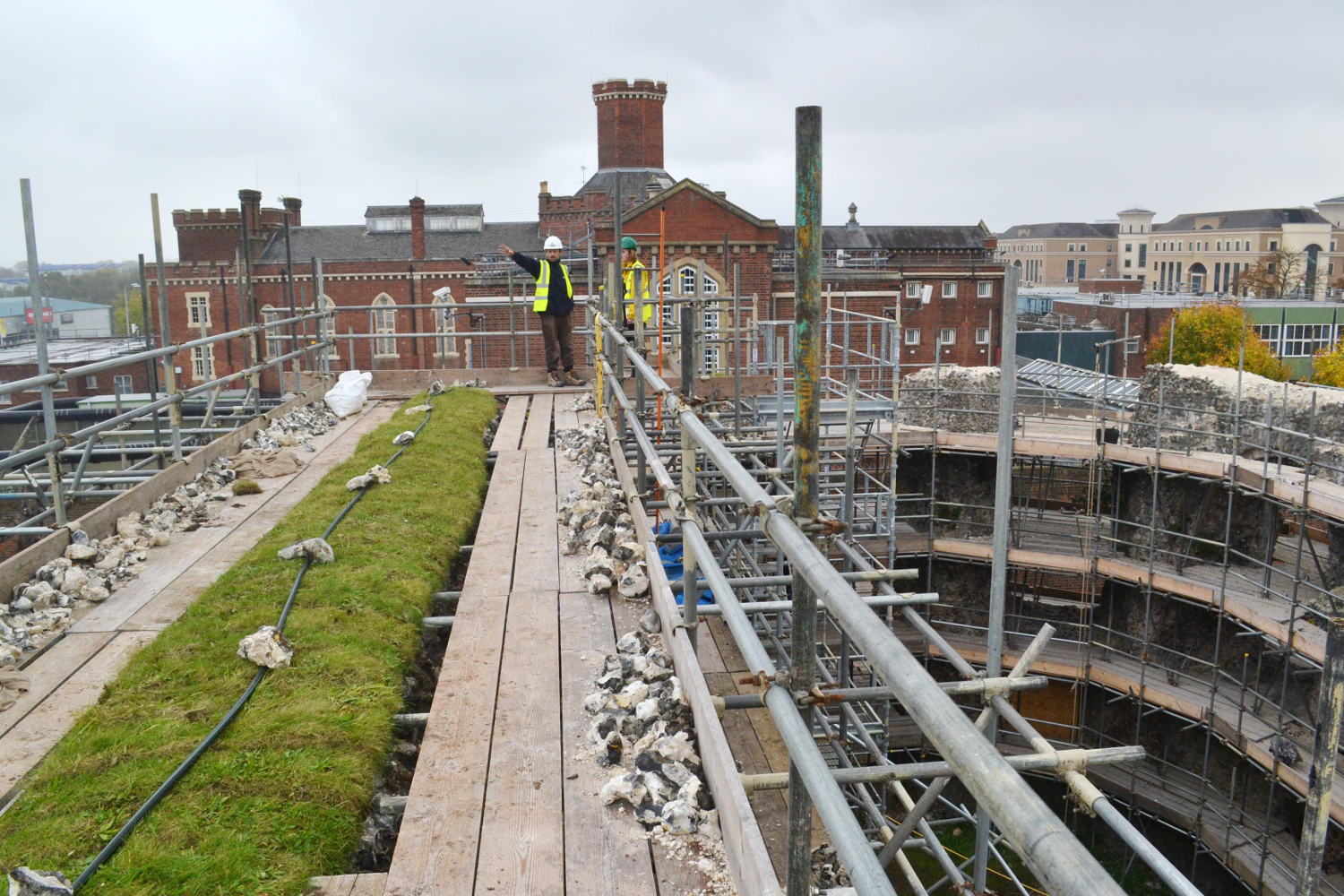
Soft capping on the Chapter House (photo: Chris Forsey)
